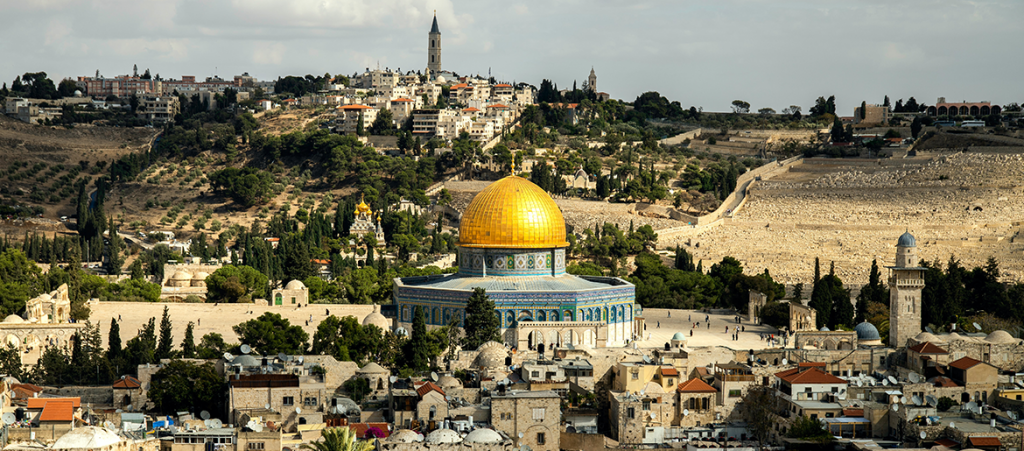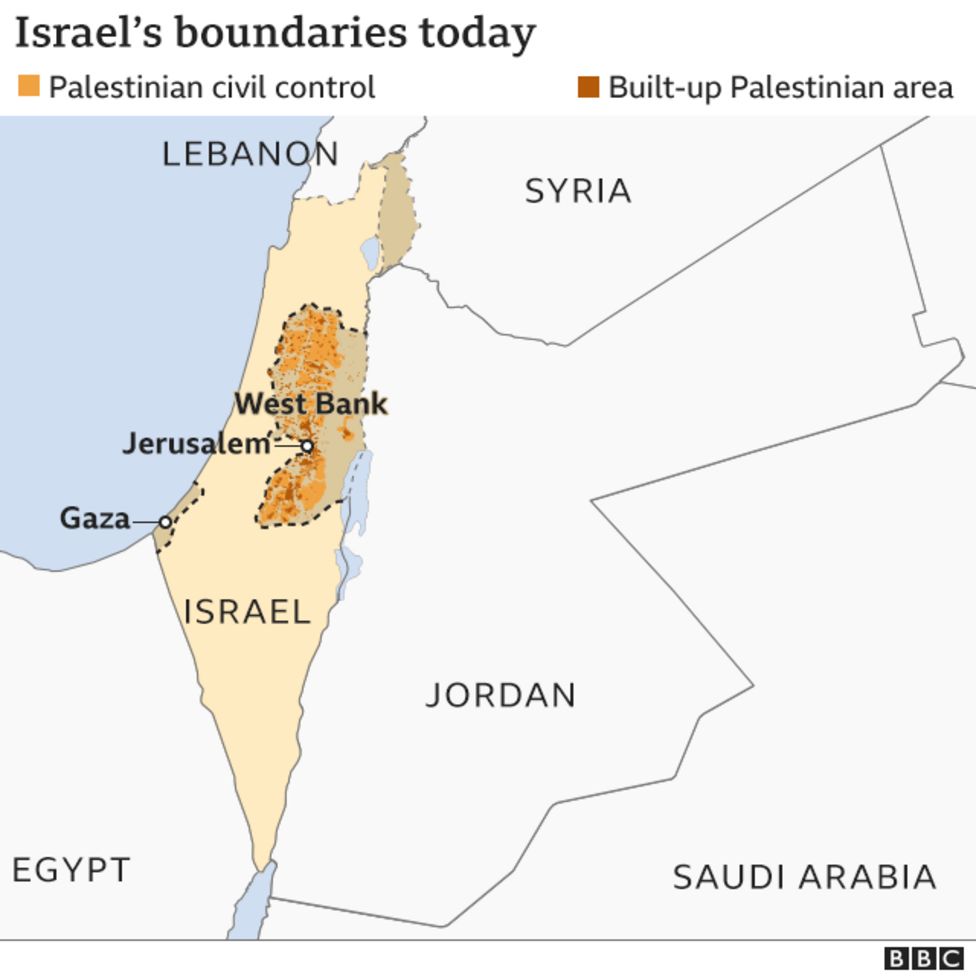
Devastating violence in East Jerusalem and the Israel-Palestine region is dominating the news, sparked this time by the violent forced removal of Palestinian families from the Sheikh Jarrah residential compound. This story and the history of war and conflict that underpins it is complicated – to help you understand, we’re breaking down the essential context.
What’s happening in East Jerusalem right now?
Israel’s government is right-wing, nationalist and expansionist (wanting to take over as much of the region as possible). Palestine-controlled Gaza is governed by the Hamas, a political-slash-militia group that uses terrorist tactics.
- In early May, the Israel Supreme Court was to hold a hearing in an on-going legal battle to forcibly evict Palestinian families from a residential compoud, Sheikh Jarrah, in East Jerusalem’s scared Old City. More on that below…
- In response, tens of thousands of Palestinians went to pray and protest at the Al-Aqsa Mosque. They were blocked from entering by Israeli police, with tensions between the two groups escalating into serious violence. Police used stun guns and fired tear gas inside the mosque compound. More than 300 people (mostly Palestinians) are injured
- In response to the violence at Al-Aqsa, the Palestinian Hamas (which is both a militant group and ruling political party) fire over 100 rockets into Israel on May 11. The Hamas say their attack is to stop “crimes and aggression in the Holy City, and its harassment of our people in Sheikh Jarrah and Al-Aqsa Mosque.”
- Israel responds to this with an air raid on Gaza. More than 200 are injured, and 35 killed (including 10 children). Despite international governments calling for de-escalation, the Israeli government and the Hamas have continued to bomb and attack the others’ territories.
- On May 14, the Israel Defense Force enters Gaza for further attacks – this is a significant escalation, and puts the situation on the brink of war.
During all of this, the protests have continued – and continued to be met with violence from Israeli authorities.
What is the history of the Israel-Palestine conflict?
To really understand why these two groups are fighting – and have been for a very long time – we need to zoom out for a short history lesson. This issue is incredibly complex (and stretches back even further than this timeline), but these are the broad strokes:

- 1917 – 1920 At the end of WWI, the British government was given control of Palestine and Jordan after defeating the Ottoman Empire that controlled the area. The British government decided to establish a ‘national home for the Jewish people’ within Palestine, as the Jewish population has an ancestral claim to the region. This was driven by the Zionist movement – a group who believe Judaism is a religion and a nationality, and so deserves it’s own home country.
However, Palestine was mostly an Arab nation – people who had ancestral and current claim to the region. The Palestinian-Arabs population did not recognise the Brits’ decision.
Essentially from this point onwards until the present day, the two groups have been battling each other for control of the Palestine region. When people say “both sides” are involved in escalation and violence, it’s because both sides are fighting for what they believe is their homeland – it’s an existential threat. - 1920s – 1940s Jewish people are forced to flee Europe in the lead up to, during and aftermath of WWII. The Holocaust has driven them out, you know this story already. Many come to Palestine, which has after all been set as their ‘new’ home.
But the Palestinian-Arabs consider the growing Jewish population to be invading settlers ‘taking over’ their land. Fighting between them continues throughout the 20s, 30s and 40s. - 1947 The United Nations created and approved a plan to split up Palestine into three areas – an Arab state (now Gaza and the West Bank), a Jewish state (now Israel) and Jerusalem, which would remain an independent, international city. Jewish leaders accepted this plan, but Arab leaders rejected the plan.
- 1948 The British give up their control of Palestine. Jewish leaders declared the creation of the state of Israel – according to the map drawn up by the UN. But for the Palestinian-Arabs this was an invasion.
Military forces from Egypt, Syria, Jordan and Iraq (also Arab nations) come in to help ‘defend’ the region. This starts the 1948 Arab-Israeli War. Hundreds of thousands of Palestinians fled or were forced out. - 1949 At the end of the war: Jordan controlled the West Bank, Egypt controlled Gaza, and Israel controlled everything else. Jerusalem was split in two – Jordan controlled the East, Israel controlled the West. Hundreds of thousands of Jewish people from around the world move to Israel. No one takes responsibility, each side blames the other.
- 1967 Nothing was resolved by the 1948 war. Tensions between the three states remained high, and in 1967 the Six Day War broke out over access to an important shipping route (the Sinai Peninsula in Egypt).
By the end of this war, Israel has taken over all of Jerusalem, the West Bank, Gaza and some of Syria, pushing out even more Palestinians. No sides agree on who ‘started’ the Six Day War. - 1979 Egypt and Israel sign a peace treaty.
- 1994 The Israeli government signs an agreement to return Gaza to the Palestinians, and withdraws from that region. This leaves the borders how they stand today.
The reason it is so difficult to identify the oppressor and oppressed boils down to this: Jewish people have been historically targeted and driven out of their homelands for their entire existence. They are fighting for a place to exist in the world. But Palestinians have had their land taken from them and given to another group. They are fighting to reclaim and retain control of their country.
All of this history sits behind the ‘new’ news you read about violence and conflict in Gaza, West Bank and Israel/occupied Palestine. Which leads us to Sheikh Jarrah…
What’s the story behind the Sheikh Jarrah ‘evictions’?
The protests that sparked this have to do with homes in Sheikh Jarrah, East Jerusalem.
Remember: before the 1948 war Jerusalem was independent but claimed by both, after that war it was split in two, and after the 1967 war it was claimed by Israel.
Palestinians have been living in most of these homes for decades. But since taking control of the city in 1967, Israeli authorities have been (violently) kicking them out. The incoming Israeli government also gave Palestinian-Arabs fewer rights – residency but not citizenship, and an uneven application of the law in the Israeli courts. This includes the application of property claim laws.
Absentee property laws established by the Israel government in 1950 stated that ‘abandoned’ properties could be taken and ‘managed’ by the government. When Palestinians were driven out of East Jerusalem in the 1967 war, their homes were seized under these laws and ownership granted to Israeli-Jews.
Despite being resettled in these homes post-war, under Israel law the Palestinian families do not own them.
But according to international human rights law, it was illegal for Israeli forces to displace the Palestinian population and replace them with Jewish settlement. The Israel government argues that because East Jerusalem was never officially designated to anyone, they were claiming it without breaking international laws.
It’s messy, but this is why both groups are making legal claims to own the properties. The upcoming court hearing on the evictions has been postponed for at least two weeks.
UPDATE: On 2 August 2021, the Israel Supreme Court put a proposal to the Palestinian families – they could sign a contract as ‘protected tenants’ guaranteeing their residence in the Sheikh Jarrah homes for three generations, but would recognise Israeli settlers’ ownership of the homes (and require the Palestinian families to pay ‘symbolic’ rent). The families have rejected the proposal, so another hearing will follow in the coming weeks.
Keep in mind, a resolution on this case will not be the end of the Israel-Palestine crisis. The immediate violence and attacks will slow down, but they won’t stop entirely because the overarching issue is much bigger than Sheikh Jarrah.
Related Posts
Why is media coverage on this so confusing?
If you’re struggling to get it, know that it’s not your fault!
This very basic summary has clocked in at over 1300 words. For media strictly reporting the news – as in, the most recent events that have occurred – it’s difficult to include a summary of the long, tortured history between these two groups. Without that context an article can look like it’s framing one side as the ‘bad guys’ and the other as the victim, and vice versa. While two governments battle for territory, their citizens live in a permanent state of threat, insecurity and violence. For outsiders looking on from afar, the situation feels helpless.
Know that this is not a story that you can easily ‘jump into’ when it’s breaking. The history is so long, intertwined and deeply political and understanding the past is crucial to understanding the present of the Israel-Palestine conflict. The truth is, the average news reader will struggle to grasp the issue without doing serious research – not just from news sources but from academia too, to help navigate the information you’re receiving.



